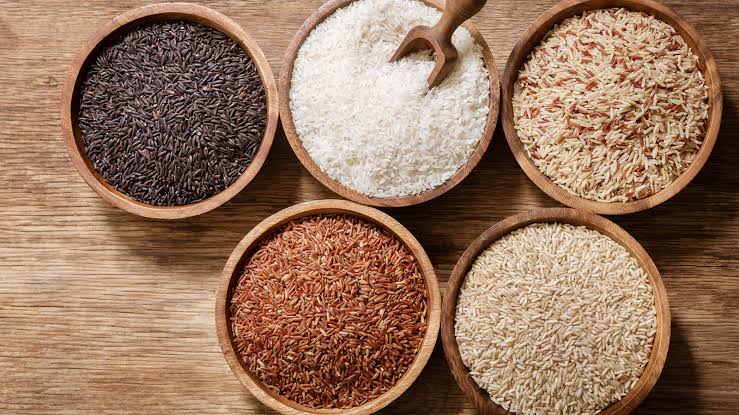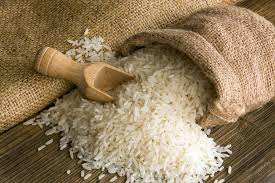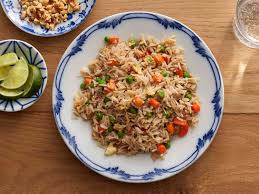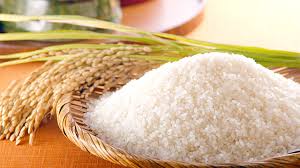Rice is a staple food for many people around the world. It is a versatile grain that comes in various varieties, shapes, and sizes. People have been cultivating and consuming rice for thousands of years, making it a fundamental part of their diets.
Rice is primarily grown in flooded fields, known as paddies, although some varieties can also thrive in dry conditions. The cultivation of rice involves a series of carefully managed steps, from planting the seeds to harvesting the mature grains. Farmers often put a significant amount of effort into ensuring optimal conditions for rice growth, including maintaining proper water levels and controlling pests.
One of the remarkable features of rice is its adaptability to different climates and terrains. Whether in the vast fields of Asia or the paddies of Africa, rice has proven its ability to flourish in diverse environments. This adaptability has contributed to its widespread cultivation and consumption, making it a dietary staple for billions of people.
Rice is not only a source of sustenance but also a symbol of cultural identity in many regions. Various cultures have developed unique dishes and culinary traditions centered around rice. From the fragrant basmati rice in Indian cuisine to the sticky rice used in many Asian dishes, the diversity of rice-based foods reflects the rich tapestry of global culinary heritage.
Nutritionally, rice serves as a valuable source of carbohydrates, providing essential energy for the body. Brown rice, in particular, retains more nutrients than its refined counterpart, offering fiber, vitamins, and minerals. The versatility of rice extends to its various forms, such as white rice, brown rice, jasmine rice, and wild rice, each with its distinct flavor and texture.
In addition to its role as a dietary staple, rice plays a significant part in economies worldwide. Many countries heavily rely on rice production for both domestic consumption and export. The cultivation and processing of rice contribute to employment opportunities and economic growth in regions where it is a primary crop.
Furthermore, rice cultivation can have environmental implications. The water-intensive nature of paddy fields, especially in traditional flooded systems, raises concerns about water usage and conservation. Efforts to develop more sustainable rice cultivation practices, such as water-saving techniques and improved varieties, are ongoing to address these challenges.
In addition, rice is much more than just a grain; it is a vital component of diets, cultures, and economies across the globe. Its adaptability, nutritional value, and cultural significance make rice a truly remarkable and indispensable food source for a substantial portion of the world’s population.
Read Also: 15 Medicinal Health Benefits Of Siberian Ginseng (Eleutherococcus senticosus)
Types of Rice

There are numerous types of rice, each with its own unique characteristics and uses. Some of the most common types include:
1. White Rice: This is the most commonly consumed type of rice. The outer husk, bran, and germ layers are removed during milling, leaving a polished, white grain. It has a mild flavor and a fluffy texture when cooked.
2. Brown Rice: Unlike white rice, brown rice retains its bran and germ layers, making it a whole grain. It has a nuttier flavor and a chewier texture compared to white rice. Brown rice is considered a healthier option due to its higher fiber content and additional nutrients.
3. Basmati Rice: Known for its long grains and aromatic fragrance, Basmati rice is commonly used in Indian and Middle Eastern cuisines. It has a distinctive flavor and a fluffy texture when cooked, making it popular for dishes like biryani.
4. Jasmine Rice: This aromatic rice variety is often used in Southeast Asian cuisine. It has a fragrant, floral aroma and a slightly sticky texture when cooked. Jasmine rice complements a wide range of dishes.
5. Arborio Rice: Arborio is a short-grain rice variety commonly used in Italian dishes, especially for making risotto. Its high starch content gives risotto its creamy texture as the rice releases starch during cooking.
6. Wild Rice: Despite its name, wild rice is not technically rice but rather a seed from aquatic grass. It has a chewy texture and a nutty flavor. Wild rice is often mixed with other types of rice for a unique blend of flavors and textures.
7. Sushi Rice: Specifically cultivated for making sushi, this short-grain rice is sticky when cooked, allowing it to hold together well for sushi rolls. It is seasoned with a mixture of rice vinegar, sugar, and salt.
8. Red Rice: Red rice gets its color from its outer bran layer, which is left intact during milling. It has a nutty flavor and a chewy texture. Red rice is often used in salads, pilafs, and side dishes.
These are just a few examples of the diverse world of rice varieties, each offering a distinct culinary experience. The choice of rice depends on personal preference, regional cuisine, and the specific dish being prepared.
Read Also: 15 Medicinal Health Benefits Of Gentian (Gentiana)
Importance of Rice

The importance of rice extends far beyond its role as a basic food item. It holds significant cultural, economic, and nutritional importance globally.
1. Dietary Staple: Rice serves as a primary source of sustenance for a large portion of the world’s population. It is a rich source of carbohydrates, providing essential energy for daily activities. The adaptability of rice cultivation allows it to thrive in various climates, making it a reliable staple in diverse regions.
2. Cultural Significance: Rice plays a crucial role in cultural identity and culinary traditions. Many societies have developed unique dishes and cooking methods centered around rice. Festivals, rituals, and celebrations often feature rice-based foods as integral elements, contributing to the cultural richness and diversity of communities.
3. Economic Impact: Rice cultivation is a cornerstone of many economies, providing livelihoods for millions of farmers. The global trade of rice is a significant contributor to international commerce. Countries that are major rice producers and exporters benefit economically from the cultivation, processing, and export of rice.
4. Nutritional Value: Rice, especially brown rice, is a nutritious food containing essential vitamins, minerals, and fiber. While white rice undergoes milling that removes some nutrients, it still remains a valuable source of energy. The nutritional content of rice varies across different varieties, offering dietary flexibility.
5. Employment Opportunities: The cultivation, harvesting, and processing of rice create job opportunities in rural areas where rice farming is prevalent. This employment not only supports farmers but also contributes to the overall economic development of communities.
6. Biodiversity: The cultivation of diverse rice varieties contributes to agricultural biodiversity. Preserving different types of rice helps maintain genetic diversity, ensuring resilience against pests, diseases, and environmental changes. It also allows for the adaptation of rice to different growing conditions.
7. Environmental Impact: Rice cultivation, particularly in traditional flooded paddies, has environmental implications, including water usage and methane emissions. Efforts to develop more sustainable rice farming practices aim to minimize the environmental footprint, promoting practices that are eco-friendly and resource-efficient.
In addition, the importance of rice is multifaceted, encompassing aspects of food security, cultural heritage, economic development, and nutritional well-being. Its ubiquity in various aspects of human life underscores its status as a global staple with far-reaching impacts.
Uses of Rice

Rice boasts a multitude of uses across diverse aspects of daily life, ranging from culinary applications to non-food uses. Here are some prominent uses of rice:
1. Food Staple: The primary and most widespread use of rice is as a staple food for a significant portion of the global population. It serves as a main dish or a side dish in various cuisines and is consumed in a variety of forms, including white rice, brown rice, and specialty varieties like basmati and jasmine rice.
2. Culinary Dishes: Rice is a versatile ingredient in the kitchen and is used to prepare a wide array of dishes. From pilafs and risottos to sushi and rice pudding, the culinary uses of rice are diverse and extend across different cultures and cuisines.
3. Flour and Products: Rice flour is derived from ground rice grains and is used in gluten-free baking and cooking. It is a common ingredient in making rice noodles, rice cakes, and various gluten-free products.
4. Beverages: In some cultures, rice is used to produce traditional beverages. For example, rice can be fermented to make rice wine, which is a common alcoholic beverage in several Asian countries.
5. Animal Feed: Rice bran, a byproduct of rice milling, is used as a component of animal feed. It provides essential nutrients for livestock and is a valuable resource in agriculture.
6. Cosmetics: Rice bran oil, extracted from the outer layer of rice grains, is used in cosmetic products. It is known for its moisturizing properties and is a common ingredient in skincare and hair care products.
7. Cultural Rituals: In some cultures, rice holds symbolic significance and is used in various rituals and ceremonies. It is often offered as a sacred food in religious practices and celebrations.
8. Biodegradable Products: Rice husks, the outer layer of rice grains, can be used to produce biodegradable products. Items such as biodegradable packaging, tableware, and even building materials can be made from rice husks, contributing to environmentally friendly alternatives.
9. Medicinal Uses: Rice water, the water leftover after washing rice, is believed to have soothing properties and is sometimes used in traditional medicine for skincare and hair care.
10. Art and Craft: Rice grains are sometimes used in art and craft projects. Intricate designs and patterns can be created using colored rice grains, making it a versatile material for creative endeavors.
The diverse uses of rice showcase its importance not only in the realm of nutrition but also in various industries and cultural practices around the world.
How to Grow and Care for Rice
Growing and caring for rice involves several essential steps to ensure a successful harvest. Here is a basic guide:
1. Selection of Rice Variety: Choose a rice variety that is well-suited to your climate and growing conditions. Varieties may vary in terms of water requirements, maturation time, and resistance to pests and diseases.
2. Preparation of Planting Site: Rice is typically grown in flooded fields called paddies. Prepare the field by plowing and leveling the soil. Ensure proper water management, as rice requires a consistent water supply, especially during the growing season.
3. Seed Selection and Preparation: Use high-quality seeds for planting. Soak the seeds in water for a day or two before sowing to promote germination. Pre-germinating seeds can help ensure a more uniform crop.
4. Planting: Directly sow pre-germinated seeds into the prepared field. Plant the seeds at the recommended depth, spacing, and density. Maintain proper row and hill spacing to allow for optimal growth.
5. Water Management: Maintain a consistent water level in the paddies, especially during the critical stages of rice growth. Ensure proper drainage to prevent waterlogged conditions, which can lead to diseases.
6. Fertilization: Apply fertilizers based on soil nutrient levels and the specific needs of the rice variety. Nitrogen is particularly crucial for rice growth. Split the fertilizer application to provide nutrients at different growth stages.
7. Weed Control: Control weeds regularly to prevent competition for nutrients and water. Hand weeding or the use of herbicides may be employed, depending on the scale of cultivation and available resources.
8. Disease and Pest Management: Monitor the crop for signs of diseases and pests. Common rice pests include insects like rice stem borers and diseases like blast. Implement pest management strategies such as the use of biocontrol agents or appropriate pesticides.
9. Harvesting: Harvesting time depends on the rice variety and local growing conditions. Harvest when the grains are mature and the moisture content is appropriate. Use traditional methods like hand harvesting or modern machinery, depending on the scale of cultivation.
10. Drying and Storage: After harvest, dry the rice to reduce moisture content. Proper drying prevents the growth of mold and ensures quality. Store the harvested rice in a cool, dry place to prevent insect infestations and maintain grain quality.
11. Crop Rotation: Implement crop rotation to prevent soil nutrient depletion and reduce the risk of pests and diseases. Alternating rice with other crops can contribute to sustainable farming practices.
12. Sustainable Practices: Consider implementing sustainable rice cultivation practices, such as the System of Rice Intensification (SRI) or alternate wetting and drying (AWD) techniques, to optimize water use and reduce environmental impact.
By following these general guidelines, you can contribute to a successful rice harvest while promoting sustainable farming practices. However, it’s crucial to adapt these recommendations to the specific conditions of your region and the type of rice you are growing.
Read Also: Sheep 101: Wool Production Complete Guide

